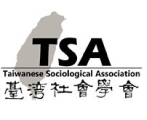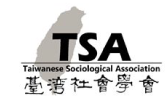主持人/ Chair:陳宗文
評論人/ Discussant:陳逸淳
發表人/ Presenter:葛家媮
題目/ Title:憂鬱是天才的代價?論台灣文學場域裡的「憂鬱資本」
摘要/ Abstract:
過去台灣的文學社會學研究,多關注作者與作品的社會生成過程,而不觸及作家的才能與作品的殊異內容。本文欲將作家的才能視為社會建構的結果,以Bourdieu的場域理論與稟性分析指出,台灣文學場域曾經存在一項構成作家才能的神秘資本──憂鬱資本。創作者個人的憂鬱之所以能投入到文學創作生產,與台灣文學場域「作品與作者不可分割」、「視精神痛苦為崇高」的遊戲規則有緊密關聯。因此,當台灣近二十年被慢慢建立起來的「憂鬱症認知」入侵至文學場域,憂鬱資本的價值便出現劇烈的變化。台灣文學場域裡的憂鬱資本,是如何在台灣社會「憂鬱症認知」的普及下逐漸貶值?文學場域如何在憂鬱症認知的入侵下,調整憂鬱的聖化機制?
本文以1995年自殺的小說創作者邱妙津為例,描述台灣精神醫療機構部屬階段,文學場域裡憂鬱的聖化機制。2005年始,憂鬱症認知在全國自殺防治計畫的深耕下逐漸普及,本文發現,文學場域裡憂鬱資本的內涵開始發生劇烈的變化。本文以2004年自殺的袁哲生為例,描繪當時文學場域對憂鬱症認知的抵抗與收編。最後,本文以2017年自殺的林奕含為例,描繪台灣社區心衛中心廣設後,情緒覺察觀念的普及,如何進一步促使憂鬱資本價值的衰落,以及一種全新的憂鬱聖化機制的誕生。
關鍵字:#場域理論 #稟性分析 #文學場域 #憂鬱資本 #憂鬱症認知
發表人/ Presenter:李芊 Chien Lee
題目/Title:The middle-class problematic: Unpacking arts’ exclusivity and consciousness of social classes in Taiwan
摘要/Abstract:
While accessibility to art in general and fine art in particular has been critically examined in the field of sociology of arts not least since Bourdieu, ethnography-based research, oriented to specific geocultural conditions of arts’ exclusivity, requires continuous updating, which still seems far from enough. Equally, I argue, attention should be paid to the frameworks employed by social members when they conceptualise their positions in relation to arts. During my teaching of a sociology of arts course in the National Taiwan University in 2023, it transpired that not small a number of students who felt alienated from arts shared one same sentiment, that arts were controlled by and produced for the middle class only. Further questioning showed that the idea of middle class was confusedly defined and was summoned to conduit a recognition that arts were accessible to social groups of which they held no membership. However blurrily conjured up was this middle class in their reasoning, fine art especially was reckoned by them as located firmly within the reach of it. Nevertheless, many of the students themselves in fact have middle class background. Two issues emerge from their assertions, each demanding rigorous dissection. Firstly, they reveal genuinely and deeply felt exclusion which calls for urgent considerations by researchers and policy makers. Secondly, arts, once linked with the middle class, regardless the latter’s definitions remaining unclear and often conflicted, are dismissed as facilitators of class division. Strongly believed, these suppositions lead to the students’ own refusal of arts and thus widen their distance from arts. This study asks how one’s understanding of class in effect shapes one’s relations with arts. It draws on firstly, Pierre Bourdieu’s analysis of class and capital factors in forming relations between arts and their public, and secondly, recent studies which questioned and adjusted Bourdieu’s conceptualisation of classes in association with arts. In-depth interviewing with twenty-three participants, from within sociology circle and without, was conducted in order to explore each subject’s class, consciousness of classes, training in sociology and their lived relations with arts. It reveals, on the one hand, informal learning rather than formal schooling plays a crucial role in cultural cultivation in Taiwan. On the other, students of Sociology are far more likely to use social classes to map their relations with the world in general and with arts in particular. The middle class is targeted when students explain inequality felt in their encounter with arts. nevertheless, their ideas of social classes remain largely vague or incorrect. This paper points out the danger of mistaken causes for arts’ inaccessibility: misunderstanding of arts and their exclusivity can lead to, if not more closed doors, inability to make effective changes. Following Bourdieu’s criticism that mere free or low-cost access to art museums could hardly suffice to render art universally attainable and his commitment to unchain art appreciation from class distinction and reproduction, this study urges for not only more inclusive schooling in arts but also more careful dissemination of sociological knowledge.
Keywords: art; exclusivity; accessibility; class; sociology; schooling
發表人/ Presenter:葉福炎
題目/Title:
消失的市場與讀者
布赫迪厄場域理論在文學研究上的應用
摘要/Abstract:
1992年,布赫迪厄出版《藝術的法則:文學場域的生成與結構》一書所發展的場域理論,促成一種獨具社會學特色的文學研究方法。然而,此方法(論)並未吸引更多的社會學者投入文學研究,卻業已成為文學研究者必備的理論知識。在臺灣的文學研究中,這種現象尤其明顯可見。從知識社會學的角度出發,本文意在探討:在臺灣的文學研究中,場域理論為何及如何成為必備的研究工具?除此之外,此一理論在文學研究中產生了什麼樣的變形,以及它如何影響該領域的研究?
本文將分為以下三個部分進行討論:一、從臺灣文學的建制及其對理論的焦慮開始談起,布赫迪厄的場域理論如何及為何成為重要的理論知識及研究工具,並以張誦聖《臺灣文學生態:戒嚴法到市場律》作為臺灣文學研究中的代表性著作,進行討論;二、筆者將搜集此一領域中所援引場域理論的相關學術發表(以期刊論文及學位論文為主),逐一分析並歸納其理論的變形——沒有市場與讀者的場域理論,探討此一理論實踐如何影響臺灣的文學研究;三、最後,在回顧臺灣文學場域的討論與分析上,本文期許能夠進一步討論臺灣文學社會學這一跨學科的發展及其局限性。
關鍵詞:布赫迪厄、場域理論、文學研究、臺灣文學
發表人/ Presenter:楊凱傑、陳彥傑
題目/Title:學泉遍開——大學校湖水景的政治與詩學
摘要/Abstract:
作為探索研究,本文立足於人造物的政治、基礎設施研究等取向,提出綜合人造物的政治與基礎設施詩學之探索架構,以探討遍及臺灣多所大專校院之校園人工湖泊與埤池(下統稱為「校湖」)蘊含之政治和美學意義。研究設計上,本文主要考察五個校湖場域,嘗試從這些案例的現象材料勾勒校湖的現象輪廓,並在此基礎上開展本研究的探索與分析工作。
本文的探索工作主要分成三個部分:第一個部分,本文首先回顧園藝景觀領中對水體的敘述,並指陳其中的視角侷限。進一步地,通過人造物的政治和基礎設施研究之認識與啟發,以及借鑑與水體設施有關之案例分析,本文嘗試以人造物的政治和基礎設施研究的詩學二個論述方向,以之搭建本研究的探索架構,並開展校湖的政治面和詩學面之探討。在政治方面,本文是以「權力」(power)和「權利」(right)概念關係組合,檢視隱含於校湖的規劃與使用課題背後的政治過程與關係,並牽涉其設置、設計、命名、用途、使用項目與資格等課題。至於詩學方面,相映於「權力」和「權利」中關於上與下的權力關係,本文則提出「上而下美學」與「下而上美學」二種視角,以檢視校湖於「地標」、「象徵」、「認同」、「感官」、「回憶」及「想像」六種再現文本中所代表的形象與美學意義。最終,本文期許通過這套探索框架,提供讀者探看校湖的分析性視角,進而帶出本題的潛力與未竟之題。
關鍵字 :校湖、人造物的政治、基礎設施的政治與詩學


